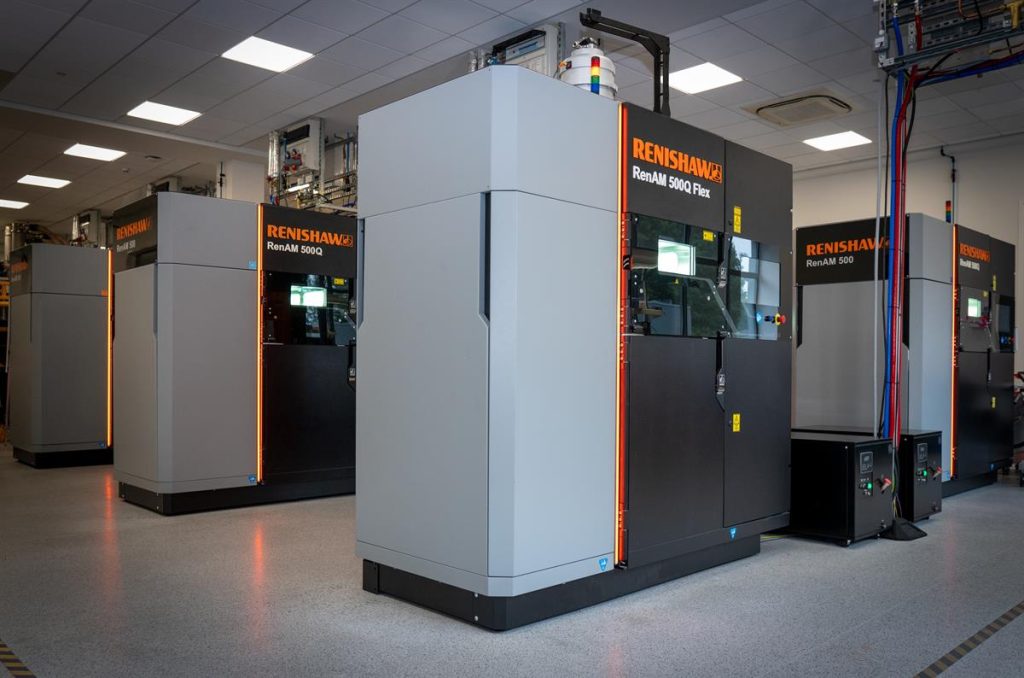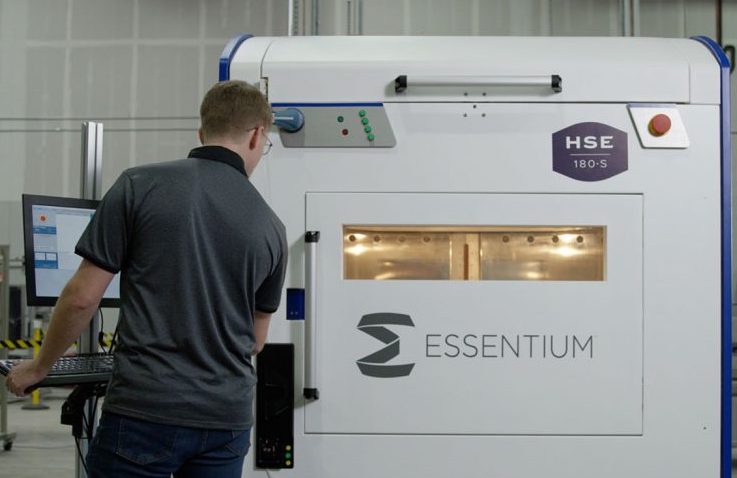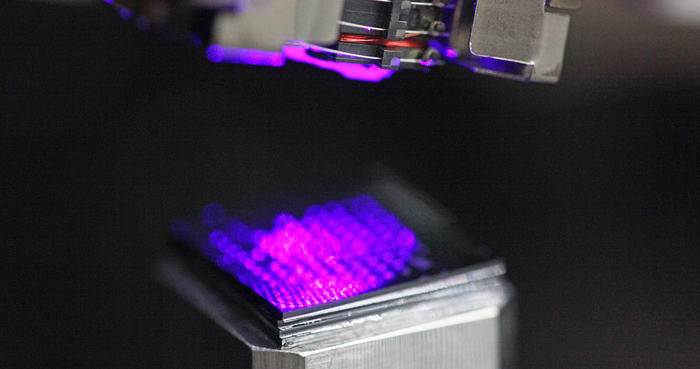Despite the ongoing impact of the global semiconductor shortage, Brexit and COVID-19 on the wider economy, February was still a month of progress in 3D printing, with defense applications, R&D innovation and new system launches all taking major steps forward.
Read on for February’s standout developments from ExOne, Markforged, Xerox, Renishaw, Stratasys, 3D Systems, Desktop Metal, America Makes and more.
Global turbulents continue
For much of 2020, COVID-19 prevented the 3D printing sector from holding in-person trade shows, and this trend continued into February 2021. That month, RAPID+TCT became the latest industry event to be moved, with a scaled-down show rebooked for September, on the grounds that its organizers wanted to hold it in the “safest possible environment.”
February also saw President Biden address the USA’s growing pandemic-induced shortages, via a review into the country’s supply chain dependency. Crystalized in the lack of semiconductors needed to build the newly-launched PS5 and Xbox One games consoles, but apparent in other areas of the US economy as well, this scarcity triggered a review focusing on potential in-sourcing opportunities.
At the time, America Makes’ Executive Director John Wilczynski hailed the initiative, saying that the group “applauded President Biden’s critical executive action to secure and strengthen supply chains vital to America’s continued progress,” while adding that COVID-19 had revealed its “untenable overdependence on imports, and the need for the capacity to respond quickly in the face of challenges.”
On British shores, meanwhile, Renishaw rolled-out a raft of new measures, designed to insulate its EU-based business from the impact of Brexit. Having carried out internal risk analyses, the firm opted to expand its facilities and stock levels at its EU offices, while making some of them independent subsidiaries, with the aim of easing any Brexit-related disruption caused to its supply chain.
Renishaw’s Chief Executive William Lee said the move would allow it to “meet the challenges posed by the UK’s withdrawal from the European Union,” and given that the firm reported a FY pre-tax profit of £120 million, it appears to have been justified.

Patent expiry opens opportunities?
It wasn’t all doom and gloom in February though, as a potential window for innovation opened when Stratasys’ heated build chamber patent expired. Given that Stratasys held exclusive rights to this FDM design from 2000-2021, those seeking to oppose it in the high-temperature market during this period, were forced to find novel workarounds.
However, the final patents covering this area of the firm’s machines went on to expire later in the month, and though Stratasys sought to play down the development, saying that it had already come up with new heated oven technologies and protected them from replication, some sources saw it as an opportunity for 3D printer manufacturers to innovate.
INTAMSYS CEO Charles Han, for instance, said the patents’ expiry could make industrial FFF systems “more popular and more competitive,” adding that they would now be able to replace “even more traditional manufacturing methods.” On the flipside, Davide Ardizzoia of 3ntr.net, said the patents’ expiration “wasn’t going to change that much,” and its new printer would only be “marginally affected.”
DoD lays out 3D printing plans
On the military front, the US Department of Defense (DoD) also kicked off a year of experimental 3D printing applications by unveiling its first additive manufacturing strategy. Drafted by the OSD ManTech Program Office alongside the US’ military services and other defense agencies, the document saw the DoD outline five key goals, through which it aimed to broaden its adoption of the technology.
During the month, there were already clear signs of this strategy being put into action, with binder jet 3D printer manufacturer ExOne commissioned by the DoD to develop a portable 3D printing factory. Set to be housed inside a standard shipping container, the system is being designed to contain everything needed to manufacture spare parts in the field, whether that be at land, air or sea.
The US Naval Postgraduate School (NPS) also revealed in February that it had installed Xerox’s long-anticipated ElemX Liquid Metal 3D printer at its university campus. Using the system, NPS researchers are currently exploring ways in which the technology can help reduce the US Navy’s spare part production costs, as well as its dependency on the US military’s complex global supply chains.

Markforged wraps up IPO
The end of the month also saw industrial 3D printer manufacturer Markforged complete its merger with Special Purpose Acquisition Company (SPAC) one. Following Desktop Metal’s $580 million deal last year, Markforged’s transaction saw it become the second in the industry to go public in this way, raising an estimated $425 million in the process.
At the time, Markforged President and CEO Shai Terem said: “We’ve been at the forefront of the AM industry, and this transaction will enable us to build on our incredible momentum and provide capital and flexibility to grow our brand, accelerate product innovation and drive expanded adoption among customers across key verticals.”
As the year went on, it turned out that Markforged would become the second in a string of high-profile SPAC mergers concerning 3D printing firms, with billions more dollars worth of similar deals being agreed before the end of 2021.
3D Systems, Stratasys and ExOne launch new 3D printers
February proved to be a bumper month for 3D printer releases too, and Stratasys kicked things off early on, with its new J850 Pro PolyJet 3D printer. Featuring a 255 x 252 x 200mm build capacity and multi-material processing capabilities, the system has been built to address low-cost prototyping applications in the automotive, medical, and consumer sectors.
Stratasys’ launch was closely followed by that of ExOne’s new Metal Designlab 3D printer and X1F furnace. Powered by Rapidia’s ‘two-step’ technology, the firm’s manufacturing unit works with ‘HydroFuse’ alloys, which can be used to fabricate highly-complex support-free parts. The systems’ launch also coincided with a deal between the firms that saw ExOne gain first refusal over any acquisition of Rapidia.
3D Systems made a splash in February as well, by making its first foray into FFF, with its new ‘Roadrunner’ 3D printer. Developed alongside Jabil, the system is said to be capable of printing high-temperature filaments at a rapid pace, potentially making it ideal for aerospace and automotive manufacturers, and putting it in direct competition with Essentium’s High-Speed Extrusion (HSE) platform.
Dr. Jeffrey Graves, President and CEO of 3D Systems, said at the time that the launch of its High Speed Fusion filament printer, would allow the firm “to build on the organizational focus it had adopted in 2020,” in addition to “expanding its presence in growing markets that demand high reliability products.”
“Our investments in this solution, and collaboration with Jabil, will allow our customers to increase productivity and performance.”

A month of dope new R&D
Away from high-profile launches, business deals and shifts in macroeconomic trends, February also saw several innovative 3D printing research projects come to fruition. One of the most eye-catching of these was an open-source lung simulator, developed at McMaster University and the University of Waterloo, that proved capable of replicating the impact of smoking cannabis on the human lung.
At the Technical University of Denmark, on the other hand, gaming readers will be happy to hear that researchers managed to turn part of a Microsoft Xbox 360 into a nanoscale medical 3D printer. Using the console’s optical pick-up unit (OPU), the team found they were able to replace the optical system of a normal SLA machine, in a way that could reduce its production cost by thousands of dollars.
“The original goal for developing our own 3D printer was to be able to print cubic centimeter volume with micro/nanoscale resolution for our own micro-container based drug delivery development,” DTU Associate Professor En Te Hwu explained back in February. “We couldn’t find a 3D printing system on the market that could do this, so we had to make our own.”
“We believe that this technology can impact different areas of health technology.”

Click to see all articles in our 2021 3D Printing Industry Review of the Year series.
To stay up to date with the latest 3D printing news, don’t forget to subscribe to the 3D Printing Industry newsletter or follow us on Twitter or liking our page on Facebook.
For a deeper dive into additive manufacturing, you can now subscribe to our Youtube channel, featuring discussion, debriefs, and shots of 3D printing in-action.
Are you looking for a job in the additive manufacturing industry? Visit 3D Printing Jobs for a selection of roles in the industry.
Featured image shows an M1 Abrams tank under TACOM. Photo via the US Army.

Be the first to comment